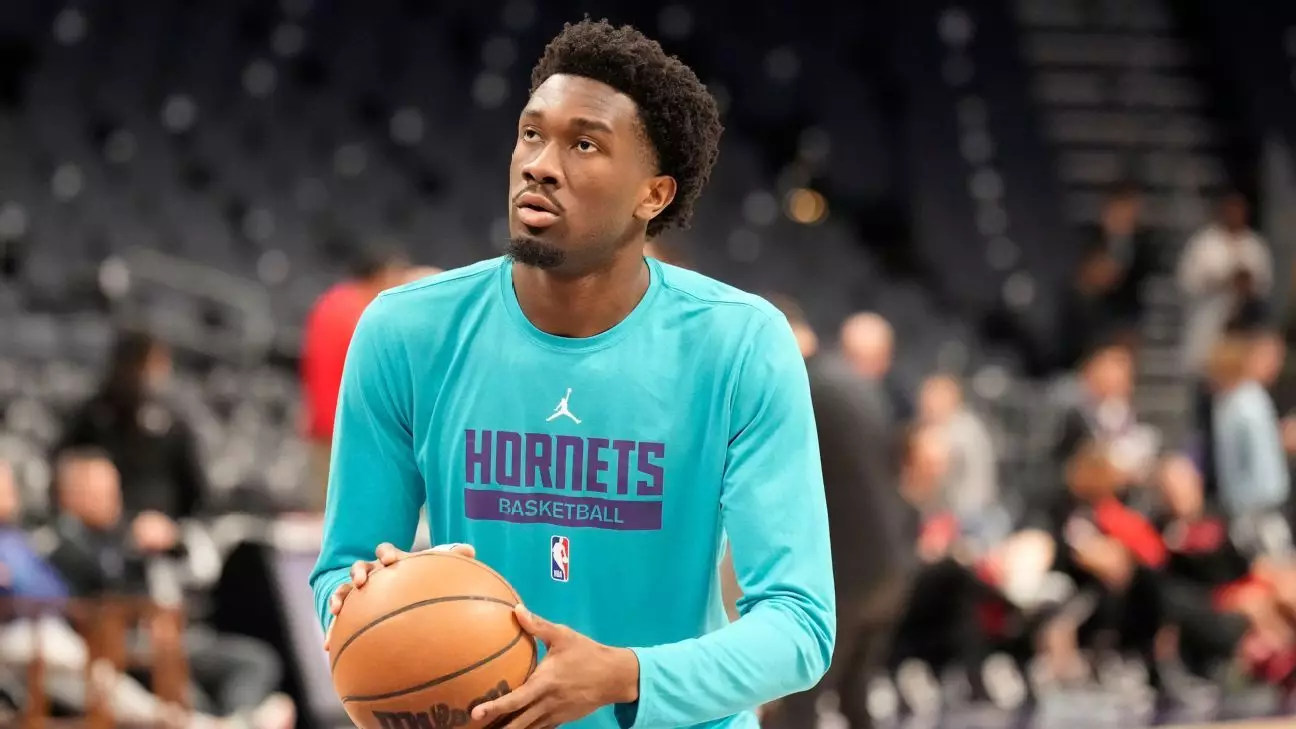The Los Angeles Lakers have made significant strides in reshaping their roster during what could be deemed one of the most pivotal weeks in their storied franchise history. The acquisition of center Mark Williams from the Charlotte Hornets marks a bold step not just for adding a player, but for aligning their future with the current stars of the team. This trade conveys a deliberate strategy aimed at maximizing their chances in the competitive landscape of the NBA.
In a strategic move, the Lakers parted ways with rookie Dalton Knecht, along with Cam Reddish, a 2031 unprotected first-round pick, and a 2030 pick swap in exchange for Williams. This transaction clearly reflects the Lakers’ commitment to rejuvenating their roster and provides insight into their urgent need for a transformative player in the center position. At 7 feet tall and weighing 240 pounds, Williams embodies the ideal mobile big man that the Lakers have sought to complement their offensive game scheme, especially one that features superstar Luka Doncic.
New Lakers head coach JJ Redick is already familiar with Williams from his time at Duke University, where Redick also played. This mentorship underscores the potential for a seamless integration into the Lakers’ system, which could be invaluable given Williams’ importance in creating vertical spacing at the rim—an element that Doncic believes enhances his own play. With Williams’ statistics revealing an average of 16 points on an impressive 59.7% shooting and 9.8 rebounds this season, it’s clear that the Lakers are banking on this young talent to live up to his promise.
The urgency to enhance their roster is amplified by the presence of LeBron James, who, despite being in the twilight of his illustrious career at 40 years old, continues to exhibit a game-changing impact. The Lakers’ approach demonstrates a commendable balance between building for the future while remaining competitive in the present. With the addition of a rising star like Doncic, combined with Williams’ skill set, the team clearly aims to optimize their title hopes while fortifying their long-term prospects.
While the Lakers demonstrated aggression in their moves—parting with key players like Anthony Davis and Max Christie—these decisions indicate a vision aimed squarely at revitalizing the franchise around new key players. The success of this strategy, however, hinges on the chemistry developed among the new acquisitions and the established roster.
Despite the optimism surrounding Williams’ abilities, there remains a cautious cloud regarding his injury history. Having participated in only 84 out of 212 games during his time with the Hornets, questions regarding his availability loom over the transaction. The Lakers, being aware of these concerns, seem to maintain confidence in Williams’ medical evaluations, stating that recent injuries did not necessitate surgical interventions. It is conceivable that the Lakers view his health status and potential performance as a risk worth taking, given the need for a solid player in the center rotation.
With the conclusion of this major trade, the Lakers have freed up a roster spot that could be utilized for further strengthening their lineup, potentially looking into the buyout market for an additional playmaker or a shooter. Knecht’s departure might tempt the front office to reach for someone who can provide the perimeter shooting that they have often lacked.
In an evolving landscape where the Lakers are positioned to be both immediate contenders and future titans, these moves showcase their strategic foresight and adaptability. This multi-faceted approach could indeed set a foundation for a new era of success, reaffirming the Lakers’ status as a competitive force in the NBA. As preparations ramp up for the remainder of the season, all eyes will be on the Lakers and how effectively these new pieces fit into their vast mosaic of talent.


Leave a Reply